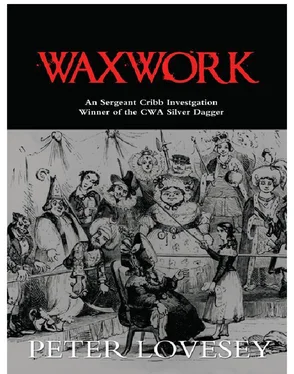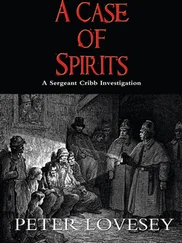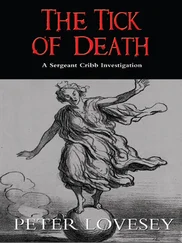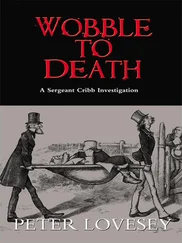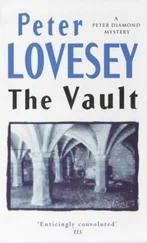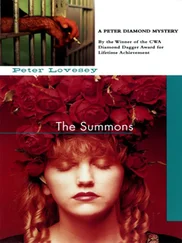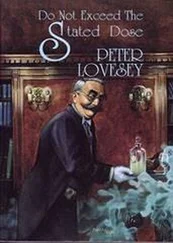Peter Lovesey - Waxwork
Здесь есть возможность читать онлайн «Peter Lovesey - Waxwork» весь текст электронной книги совершенно бесплатно (целиком полную версию без сокращений). В некоторых случаях можно слушать аудио, скачать через торрент в формате fb2 и присутствует краткое содержание. Жанр: Исторический детектив, на английском языке. Описание произведения, (предисловие) а так же отзывы посетителей доступны на портале библиотеки ЛибКат.
- Название:Waxwork
- Автор:
- Жанр:
- Год:неизвестен
- ISBN:нет данных
- Рейтинг книги:3 / 5. Голосов: 1
-
Избранное:Добавить в избранное
- Отзывы:
-
Ваша оценка:
- 60
- 1
- 2
- 3
- 4
- 5
Waxwork: краткое содержание, описание и аннотация
Предлагаем к чтению аннотацию, описание, краткое содержание или предисловие (зависит от того, что написал сам автор книги «Waxwork»). Если вы не нашли необходимую информацию о книге — напишите в комментариях, мы постараемся отыскать её.
Waxwork — читать онлайн бесплатно полную книгу (весь текст) целиком
Ниже представлен текст книги, разбитый по страницам. Система сохранения места последней прочитанной страницы, позволяет с удобством читать онлайн бесплатно книгу «Waxwork», без необходимости каждый раз заново искать на чём Вы остановились. Поставьте закладку, и сможете в любой момент перейти на страницу, на которой закончили чтение.
Интервал:
Закладка:
Actually he was glad of the conducted tour, because he learned a lot from Mr Tussaud. The Chamber of Horrors was closed to the public for half an hour to allow the official party a private view. It was like being the Prince of Wales.
He found the place noticeably more gruesome this time. The glass eyes of the figures seemed to watch his approach and move with him. Mr Tussaud told him that visitors were sometimes convinced one of the figures had moved, and they were right, because the Metropolitan Line was sited below the Chamber and sometimes caused vibrations.
They told him he would always be welcome there. Bill Marwood and the grizzled old mongrel he had kept as a pet had been frequent visitors. They knew Marwood’s taste for gin and had always provided him with a glass and a pipe of tobacco.
Berry wanted to be satisfied that they would exhibit his model like Marwood’s, in a position that made it clear that he was not a lawbreaker, so he raised the matter with Mr Tussaud. ‘I should not wish to be an object of abomination and disgust,’ he said pointedly.
Mr Tussaud drew back in surprise. ‘My dear Berry, you need have no anxiety on that score,’ he answered. ‘Mr Marwood selected the spot where he wished his figure to stand and so shall you. But even if by some mischance your likeness was taken for a murderer, I doubt very much whether it would excite the emotions you describe. Far from disgust, our patrons tend to regard the figures with awe and veneration. This may surprise you, but when we remove the clothes from the models to clean them, we often find handkerchiefs in the pockets. They are ladies’ handkerchiefs, lace-edged and still smelling of perfume.’
It did not surprise him. He had long since ceased being surprised by the morbid inclinations of the fair sex. He had not forgotten that his business in London this time was with one of them. Nor had Mr Tussaud.
When the tour was done, the guests shook his hand again and departed. He was taken to the modelling-room. He saw scores of disembodied heads ranged on shelves along the walls. Some he recognised from newspaper illustrations. He supposed Marwood’s head would soon be deposited there. ‘This place is grimmer than the Chamber of Horrors,’ he told his host.
They told him how the figures were modelled, using clay, from which a plaster cast was made. The wax was poured into the mould so formed. When it had hardened, the plaster was removed. The wax did not come into contact with the sitter. All that was required were measurements and sketches and a degree of patience while the head was modelled.
A fee was discussed. It was higher than he had expected. He betrayed no sign that he was pleased. They added another guinea and he accepted. ‘This is a departure from custom, you will appreciate,’ said Mr Tussaud. ‘Those who appear in the Chamber are not usually compensated for the honour.’ There was a gleam of humour in his eye.
The conversation turned quite naturally to the Kew poisoning case. ‘Our model of Miriam Cromer is practically finished,’ said Mr Tussaud. ‘Now that public executions are discontinued, the crowds come here on the morning of a hanging instead of gathering in front of Newgate. We exhibit the figure of the murderer immediately we hear that you have performed your work. A notorious murderer will attract twenty thousand or more. The street outside is impassable for hours. A murderess is a particular attraction. Miriam Cromer had no trial to speak of but I still expect a considerable crowd on Monday morning.’
‘It’s just a job to me,’ Berry made clear. ‘I make no distinction, man or woman, except in calculating the drop.’
‘I understand that a petition with over ten thousand signatures is to be delivered to the Home Office,’ said Mr Tussaud. ‘There is a lot of sympathy for Mrs Cromer. The columns of the newspapers are daily filled with correspondence about the sentence.’
‘That’s to be expected,’ Berry told him. ‘By all accounts, she’s a good-looking woman, and she was being blackmailed. The public are easily swayed by sentiment.’
‘Shall you see her before Monday morning?’
‘It’s my custom to visit them in the condemned cell the day previous. They like to be assured that I do my work without causing them to suffer. It’s thirteen years since Calcraft retired, but the stories of his bunglings persist.’
‘Mr Marwood used to tell us,’ said Mr Tussaud quickly.
‘Every word were true,’ Berry went on. ‘When I were in Bradford and West Riding Police I saw the old man turn off three together in Manchester. He were over seventy then. Forty years and more as public hangman. He had to climb on the back of one to finish him. Strangulation. It should never happen. Marwood changed all that. It’s scientific now. We give them a long drop.’ He talked about his table of body weights, but Mr Tussaud found he had something urgent to attend to elsewhere in the building, so Berry was left in the care of the young man working the clay.
It was a long sitting, but by the end a tolerable likeness emerged. You could not really judge, the young sculptor said, until the eyeballs were in and the hair and moustaches on. Perhaps not, but what was there already was right. Looked at from the side, the face had what his mother used to call the Berry profile, the strong forehead, straight nose and firm jawline. He liked it enough for the thought to enter his mind of asking them to model two and give him the spare to bring home. Just the head.
Thinking it over, he decided against the idea. True, his wife had said she would like his portrait in the front room, but he suspected she would not feel easy with his head in wax, even under a glass dome. Besides, there could be a difficulty travelling with it. He could carry it wrapped in a hatbox, but there were always people ready to put grisly misconstructions on things. If he planned a surprise like that, something was sure to go wrong. He dared not take the risk.
No, the surprise he originally had planned was better. He would have his photograph done in London and take it home as a present. His wife would take it as such, any road. For himself, if things went according to plan, it would be a souvenir fit to take its place in the front room with the great knife used by the executioner of Canton and his other relics.
He was going out to Kew to have his portrait taken by Mr Howard Cromer.
Before lunch, Mr Tussaud returned and some further business was discussed. An offer was made for certain items shortly to come into Berry’s possession. He promised to give the matter his consideration. He would sleep on it and give them an answer in the morning, when he came for another sitting.
Mr Tussaud said that they would put Berry’s figure in the Exhibition on Monday morning. If he had occasion to drop by, he could see it before returning to Bradford. Berry smiled and made no promises.
‘There were these three young ladies,’ said Chief Inspector Jowett.
It might have been the start of a smoking-room story, except that this was Sergeant Cribb’s sitting room in George Road, Bermondsey, and Jowett never told stories to lower ranks. He was putting some order into the verbal report he had just received from Cribb. That was how he would have expressed it, if pressed. Cribb had his own idea what was going on. Jowett had caught the scent of a decision ahead. If he could find a way of avoiding it, he would.
‘Miriam Kilpatrick, Judith Honeycutt and Miss C. Piper,’ said Cribb.
‘And you believe that because they were photographed together on the Literary and Artistic Society outing, they were the three who were tricked into posing for offensive photographs?’
‘The confession mentioned three,’ said Cribb, sidestepping the question.
‘So you went in search of Judith Honeycutt and found that she was dead?’
Читать дальшеИнтервал:
Закладка:
Похожие книги на «Waxwork»
Представляем Вашему вниманию похожие книги на «Waxwork» списком для выбора. Мы отобрали схожую по названию и смыслу литературу в надежде предоставить читателям больше вариантов отыскать новые, интересные, ещё непрочитанные произведения.
Обсуждение, отзывы о книге «Waxwork» и просто собственные мнения читателей. Оставьте ваши комментарии, напишите, что Вы думаете о произведении, его смысле или главных героях. Укажите что конкретно понравилось, а что нет, и почему Вы так считаете.
